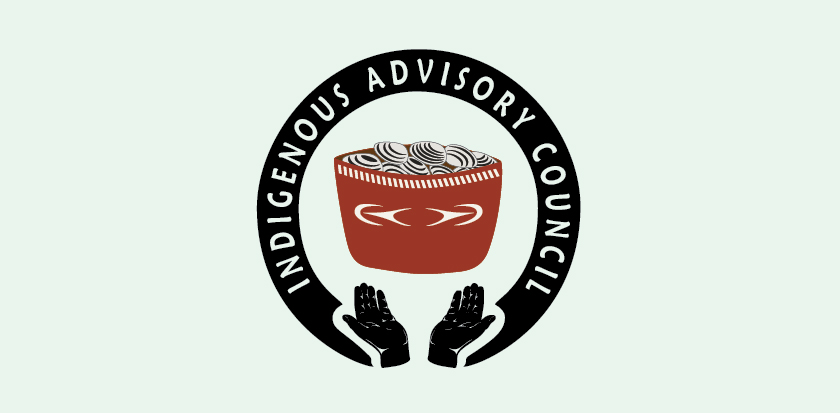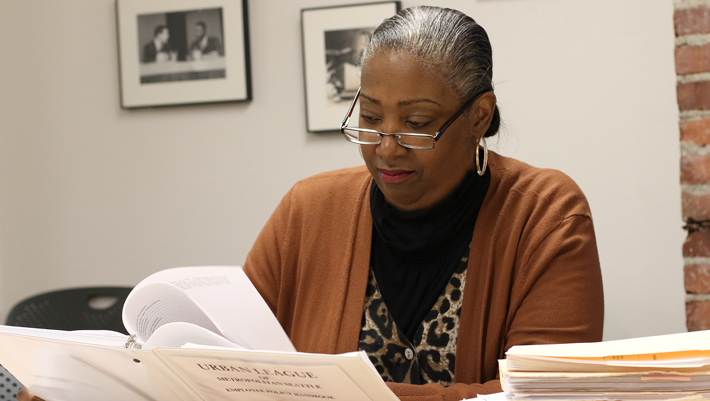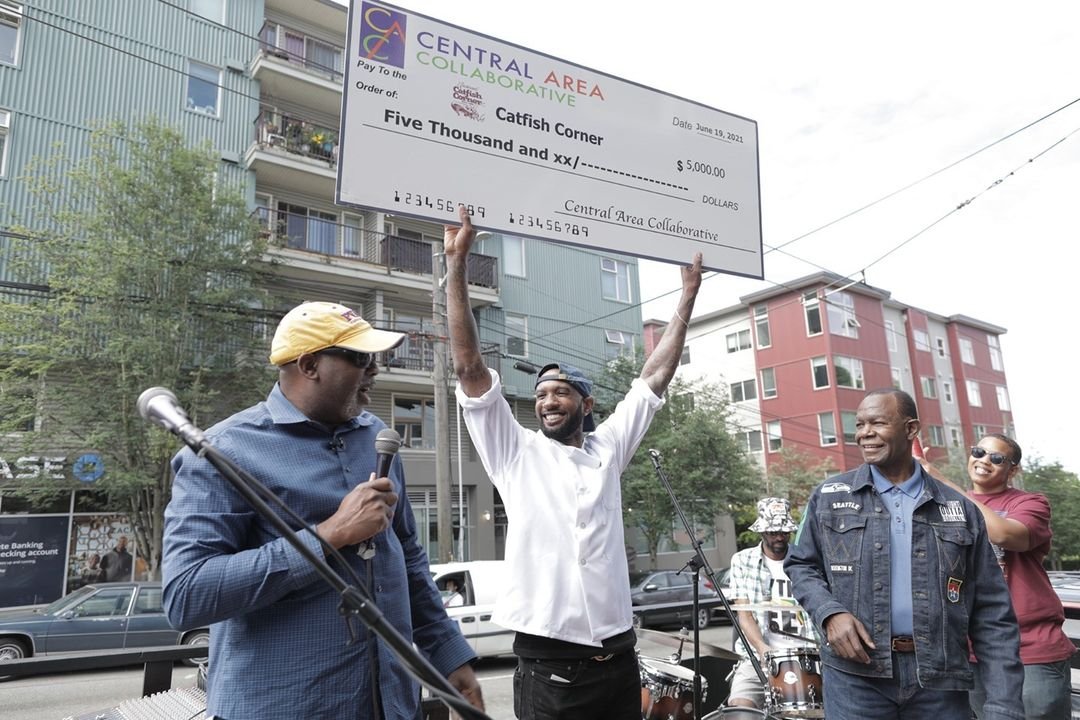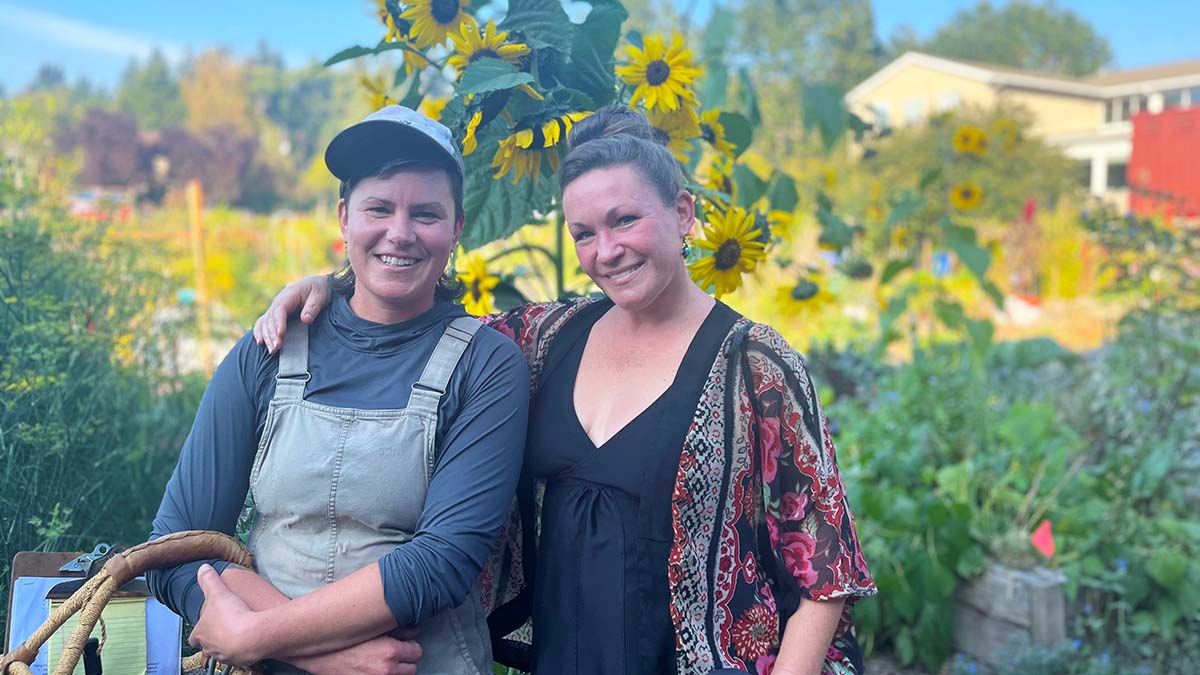
Picardo P-Patch: Alex Soleil and Ava Clennon
How long have you two been gardening at Picardo P-Patch
Alex: I’ve been gardening Picardo farm since 2013 when I moved in with a house that had a plot here. And since 2016, I’ve been coordinating the Giving Garden, and that’s where we grow all of the food for donation. That means overseeing what is planted there and then coordinating volunteers to plant and lead and harvest.
Ava: I started gardening at Picardo last year. I had put myself on the wait list for Picardo about four years ago, and there was about a three-year wait list. Throughout my whole childhood, I was growing food because if you didn’t grow food, you’d starve, literally! My family is all farmers from the Midwest, and they taught me to appreciate black soil. Now, I study microbiology and I understand why we love black soil. I just instantly fell in love with the black soil at Picardo when I first visited this place years ago. When the lockdown happened, my partner and I both worked in restaurants. We were told that we were going to be unemployed for two weeks, and then we both ended up being unemployed for two years and we both had to rework our lives. I started volunteering every week at the U District Food Bank. It was during this time that I got a plot at Picardo and was approached about taking on the donations program.
Can you tell us a bit about your Giving Garden donation program?
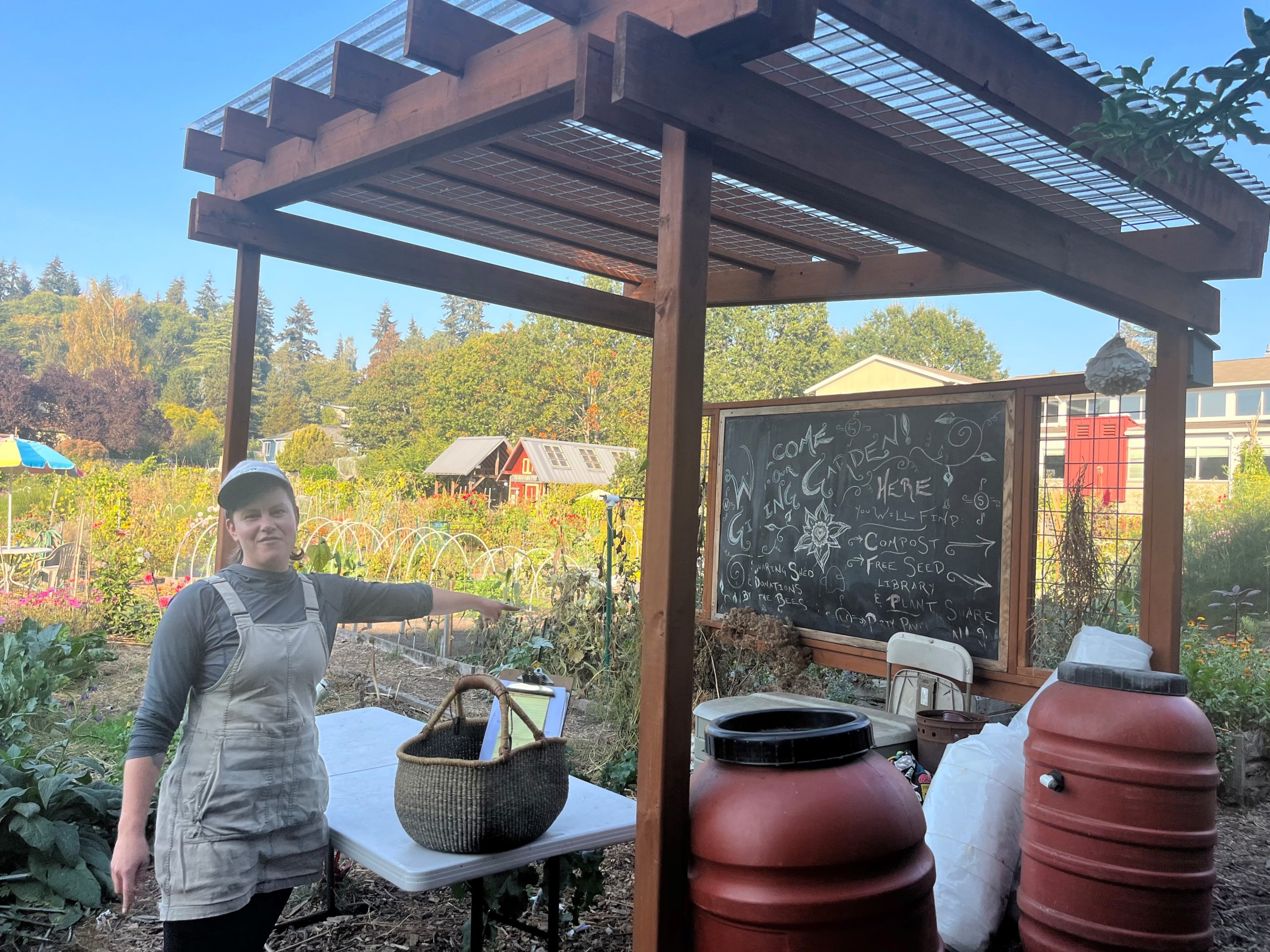
Alex: There are 22 raised beds where we were growing our donations. We had lots of different ways of coordinating volunteers and everything was just divided up into boxes, with gardeners dedicating their time to one box. Thousands of pounds of food were coming out of those raised beds. We had five different locations where we were donating, including the North Helpline, the U District Food Bank, Silvercrest, and the QuEST Quaker community. But we started to notice that we were donating to the same food banks where all of the other P-Patches and farmers were also donating the same things. We started to get feedback that some of that was having to get thrown out. It was discouraging because so many people worked hard to grow all that food and there are lots of other things we’d rather be doing with that stuff than having it go to commercial composting facilities. So, we reeled that in, and last year we started looking at trying to create other partnerships.
How have you shifted your food donation program to focus more on community partnerships?
Ava: Alex and I started talking about how a lot of the donated produce was being wasted and I started realizing we could do so much better, both by the people who have been lovingly raising this for an entire year and by the community. We donated over 1,300 pounds of food during lockdown and more than 2,000 pounds this year, so I knew that there would be a steady supply for our community network. We made the decision to stop delivering produce to food banks, and instead transition our program to building long-term community partnerships with three different organizations in our neighborhood. One of our rock star gardeners, Joan Coffee Taylor had a connection with the Silvercrest Senior Residences; I then developed a relationship with the Sand Point Family Housing Residential Program Manager, Shavon Jones; and we also deliver to Idris Mosque, which serves the North African immigrant community.
Why are these partnerships so important?
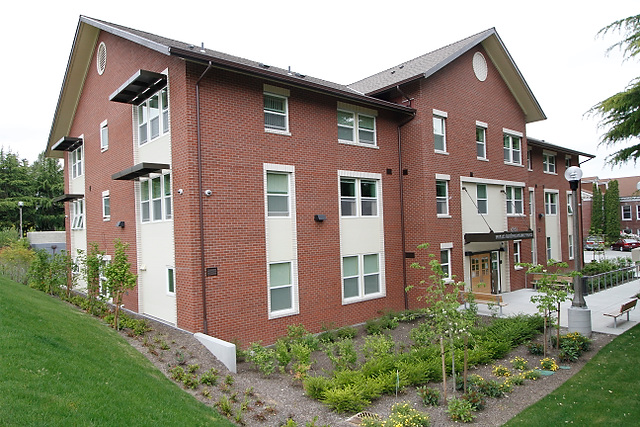
Ava: We wanted to make relationships with vulnerable neighbors and help people that are at a moment where they really could use neighborly love, and we could grow the things they want and use. With Sand Point Family Housing, for example, all of these folks live on the Magnuson campus 10 minutes away. They’re all families with children formerly experiencing homelessness and with a head of household with a chronic disabling condition. So they’re all survivors, they’re relocated there, but that particular location is a food desert. With our direct community relationship, we take a donation of our produce over to Sand Point every week and our gardeners here at Picardo are starting to get excited about doing more than just donating produce. Recently, Shavon told me that, over the course of the summer, the families started coming downstairs altogether to pick out food that gets lined out on the table. She said, “Everything is used, nothing goes to waste and the families have started trading recipes with each other and looking up recipes at the table.” A lot of the young people didn’t even know what most of these vegetables and herbs and fruits were. Shavon made a huge poster board with all the pictures of things and now the kids aren’t just learning the names of vegetables and fruit, they’re also starting to ask about how to garden for themselves.
We intend for these relationships to be long-term, to keep growing, and to rely on input from the community. The Silvercrest retirement community is largely made up of low-income immigrants. So we can ask them now, “Hey, what are the foods that you love to eat because we have the space and we can grow them?” We’re now starting to get feedback on what it is that people genuinely want so we can take this giving garden space and use it as the local grocery store for folks. We also hope to involve the communities we are serving in the gardening process to help empower people by teaching them how to do it for themselves. The end result of this whole community relationship is getting people in the community involved that are younger, that are excited to get involved.
Alex: I think that we can be a hub of organizations that are fighting for food justice and combating hunger. I think that we’re just one piece in this big web and we’re all connected in different ways, but I think in terms of systemic change, having connections to lots of different kinds of organizations is key. Bringing more voices in and figuring out how to make it a more participatory process and a much more inclusive one. And using language around inclusion, that’s something that I think we’re also lacking here, that inclusive language and cultural recognition. I hope that we can grow to be a beacon of inclusive people doing actions that support community. Walking our talk.
What’s next for the future of the Giving Garden space at Picardo?
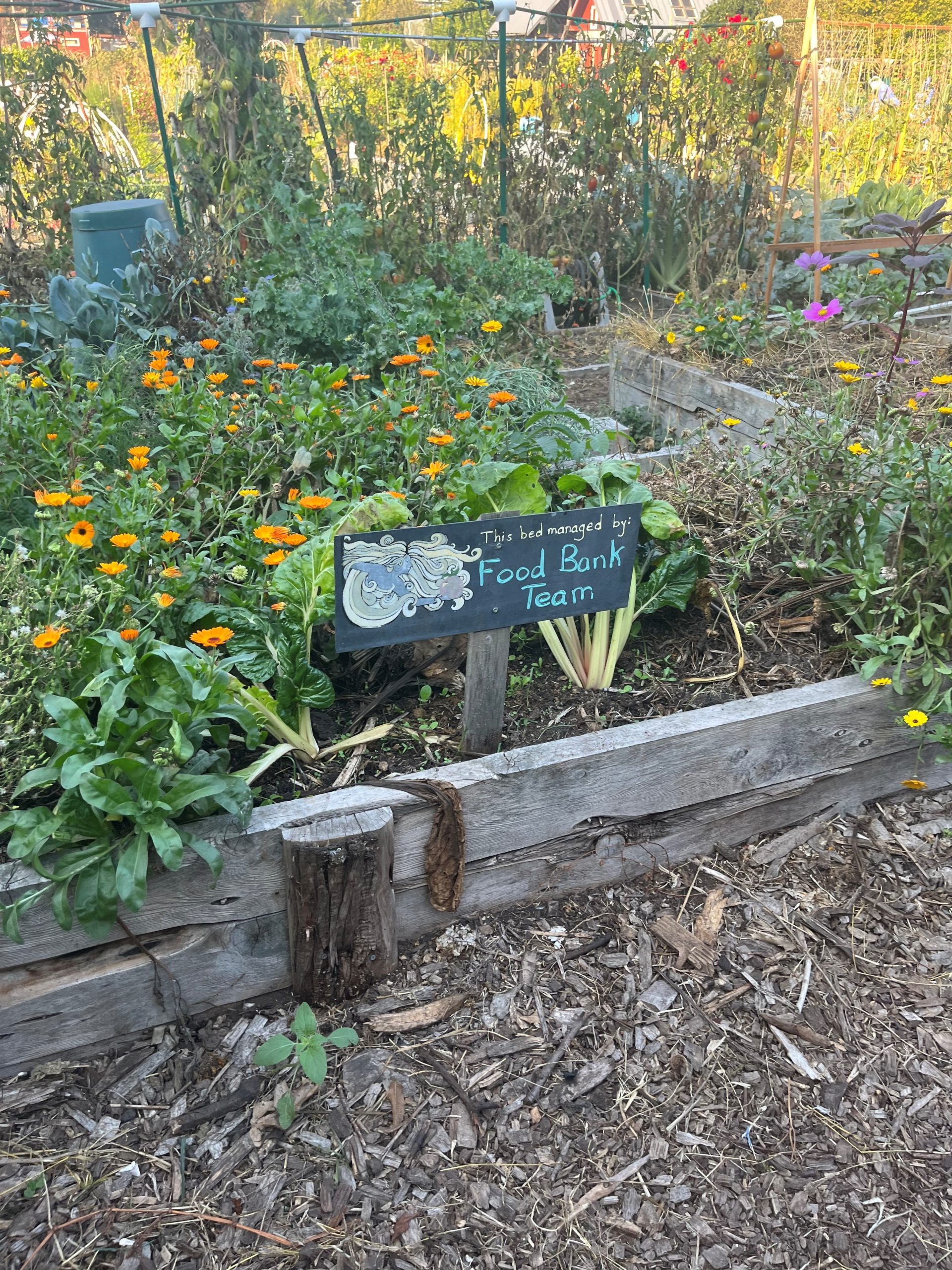
Alex: We want to increase our surface area and do more regenerative agriculture practices to create more abundance of produce that we can donate. To redesign the Giving Garden we are working with Bastyr University. Caitlin Gillson teaches their Holistic Landscape Design course. She is going to look at all the objectives of who we’re donating, who we’re already working with, and how we want to do more outreach and find other organizations and get more volunteers in. Our garden is aging so we need to figure out how to get younger people engaged so that we have people doing the hard work. There is an opportunity for us to be a model for how to do regenerative agriculture in an urban environment. It’s so special.
